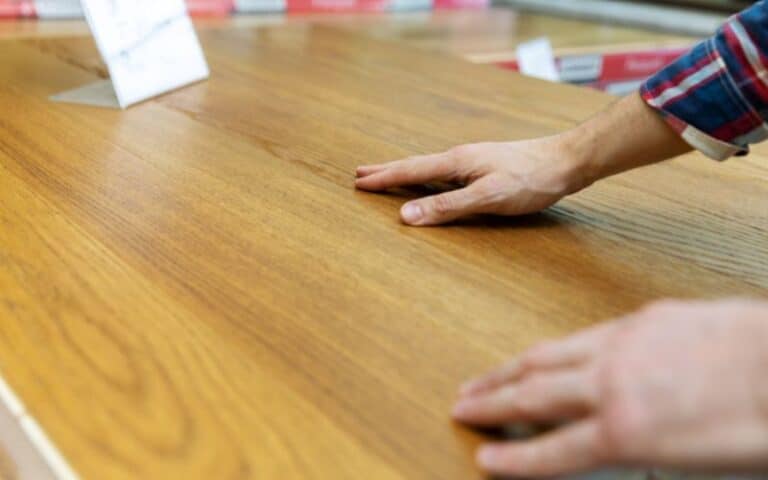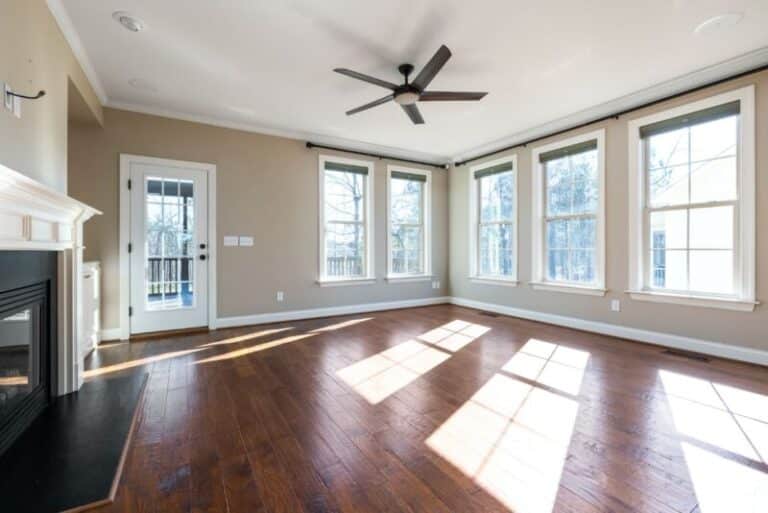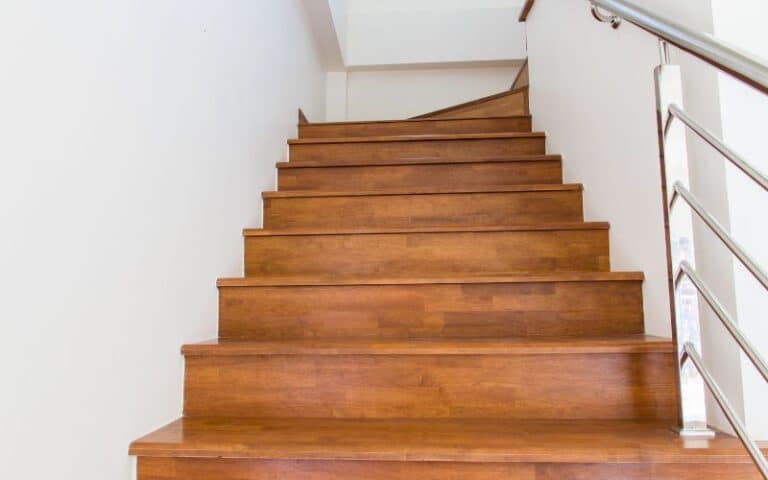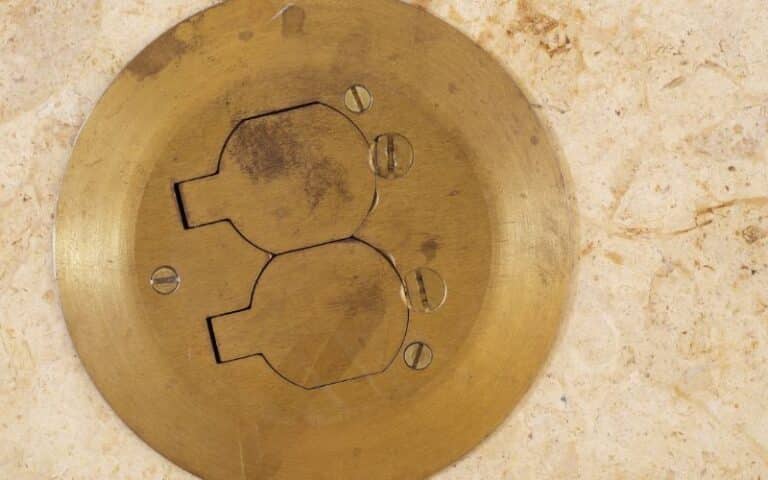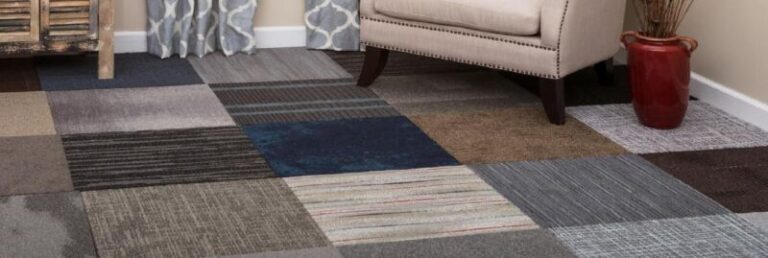Kilz is a popular primer many homeowners use before painting walls or dealing with stubborn stains and unpleasant smells.
But some wonder if it serves just that purpose on walls and other building parts. What about flooring?
Although some argue that Kilz isn’t advisable for flooring, others believe it can benefit some flooring types. However, when preparing a subfloor for new flooring, can you use Kilz?
You can use Kilz on subfloors. Its design allows it to seal and prime surfaces, including subfloors, before painting or applying other finishes. Additionally, it helps block stains, bad smells, and moisture, creating a smooth and durable surface for the flooring. But endeavor to extend its drying time to avoid messing up the floor.
In this article, we’ll explore the benefits of Kilz on subfloors, how to properly apply it, and any precautions to take.
Ready for a Flooring Quiz?
Can You Use Kilz on Subfloors?
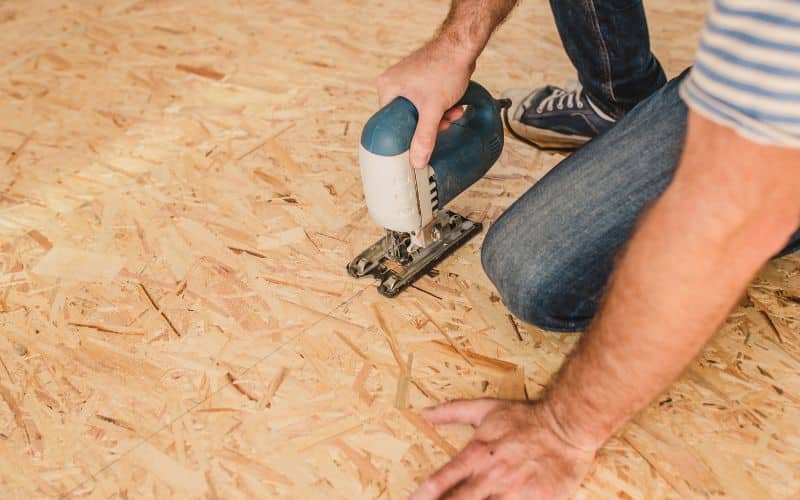
A Kilz primer works well on subfloors as it is the foundation of the flooring. Hence, you don’t need to worry about it not working.
It also helps to prevent moisture or water from seeping through the floor. However, as previously mentioned, painting Kilz on your subfloor isn’t similar to using it on walls.
Since this is part of the flooring preparation, plan enough time for the subfloor to dry before you begin the final work.
Additionally, inspect it after it dries to see if there are any areas you didn’t get right. Afterward, sand the subfloor to make it smoother and ready to adhere to the flooring.
Using Kilz on your subfloor also offers benefits. Let’s consider some of them.
Firstly, applying the Kilz primer on subfloors helps to seal and protect the surface, preventing moisture and odor penetration.
This benefit makes a lot of difference and matters to some, especially because they’re about to install new flooring on top of the subfloor.
In addition, Kilz can also help to improve the adhesion of new flooring material to the subfloor. By creating a smooth surface, Kilz helps ensure the flooring adheres properly and lasts longer.
Furthermore, Kilz helps to cover up any stains or discoloration, giving your subfloor a fresh and clean appearance.
There are many more advantages of Kilz, which works best and how to use it. Such information will help you choose the best Kilz for you and use it well.
But we’ll highlight some of those details in the table below and then discuss some proper techniques to follow while applying Kilz.
| Kilz Primer Type | Specific Use |
|---|---|
| Kilz Original | It’s ideal for blocking stains, odor, and tannin bleeds. |
| Kilz 2 Latex | It provides excellent adhesion and mildew resistance. |
| Kilz Premium | It offers superior stain and odor-blocking capabilities, excellent adhesion & durability. |
| Kilz Restoration | Its design allows it to tackle heavy stains or damaged surfaces like smoke-stained walls. |
| Kilz Max | It works best for severe stains and odor, including smoke, nicotine, and pet urine. |
#1. Proper Kilz Application Techniques
Following appropriate and necessary steps in the Kilz application on subfloors is crucial as it determines the success of your work.
#1. Inspect Your Subfloors
You shouldn’t skip this step if you’re trying to apply Kilz on the existing subflooring. Check for cracks, holes, gaps, or uneven surfaces.
If you find any, repair them and fill the gaps with wood fillers, caulk, or any necessary materials.
If it’s beyond saving, get new subfloors. Allow any repair or fillers to dry and acclimatize.
#2. Clean the Subfloor
If you just installed new subfloors, proceed to this step, as we assume there’ll be little to no damage.
Thoroughly clean the subfloors using a broom and a vacuum cleaner to clear away debris, dust, or dirt. Doing this ensures the primer adheres well to the subfloors.
#3. Proper Sanding
If your subfloor has a glossy or smooth surface, applying the Kilz primer won’t work. Therefore, sanding the surface is advisable to create a rough texture.
Afterward, proceed to remove any previous coatings. Use a paint stripper if the sanding didn’t clear all.
#4. Clean Again
After sanding the subfloor, debris and waste will be on its surface. So clean it again. You can use a damp rag or mop to do this.
#5. Apply Kilz Primer
After finishing the previous steps, proceed to apply the Kilz primer. You can use a toothbrush or roller and apply a thin and even coat of primer to the entire subfloor.
#6. Ventilation
It’s advisable to do this before beginning to reduce the impact of the Kilz primer’s fumes. You may also use a nose mask while doing this.
And most importantly, allow the subfloor enough time to dry. Ventilating could be natural or artificial. Open up your doors and windows and turn on a fan to speed up the process.
Is It Okay to Use Kilz on Concrete Subfloors?
You can apply Kilz on concrete subfloors. It has an amazing adherence and creates a durable finish. Its white color also makes it best for interior use.
Applying Kilz to your concrete subfloors helps produce a smooth and even surface while providing a protective layer against moisture, stains, and any potential damage.
To apply Kilz on your concrete subfloor, you need to begin by preparing the surface—the steps we mentioned above, as application techniques can also work for this.
But you won’t need to sand it. Then, you can apply the Kilz but at least two coats of the primer for best results.
However, remember that the effectiveness of this product depends on the type of Kilz you use, the application process, and the subfloor’s condition.
Not all Kilz works well for concrete subfloors. Hence, using Kilz Concrete & Masonry Bonding Primer is vital.
All Kilz products and applicators are found on their Amazon page or from your local retailer. This precise primer provides the best results, coverage, and an appealing appearance.
In short, it even promotes better paint adhesion, should you decide to paint the concrete subfloor.
Does Kilz Cover Subfloor Stains Effectively?
Kilz effectively covers subfloor stains with three different primers that aim to solve such problems.
According to the table above, Kilz Original is an effective water-based primer that blocks stains from seeping through.
In addition, Kilz 2 Latex and Kilz Max do an excellent job. However, you also play a role in this. You must first assess the stain type you are dealing with.
You’ll know what product to use if they’re heavy or light stains. Next, prep the surface appropriately before priming.
Then, do a stain test to determine if you should apply extra primer coats. Following these steps and working with the right Kilz primer will prove effective.
Is Kilz Best Used As a Restoration Paint or Primer?
You can use Kilz as a restoration paint or primer, depending on the specific needs of your project.
When you use it as a restoration paint, it’s primarily to effectively cover and seal stains, such as water damage, smoke damage, or even odor from pet waste products.
Has a high concealing power, which can excellently block out the stains and prevent them from bleeding through the topcoat.
Kilz restoration paint also has amazing adhesion properties, making it bond effortlessly to wood, drywall, and concrete surfaces.
Hence, it’s an excellent choice for restoring damaged or stained surfaces. On the other hand, Kilz primer helps to smooth and even out surfaces before a topcoat.
Additionally, it is well-recognized for its effective adhesion properties to ensure the paint or final finishing is durable.
In conclusion, whether you use Kilz as a restoration paint or primer is up to you and your project type, but it works effectively in both situations.

